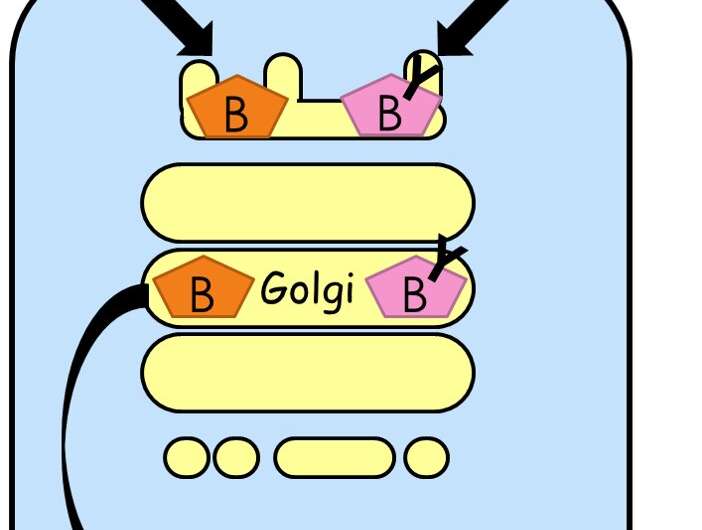To cell surface and beyond: Tracing subcellular glycoprotein transport using modified cholera toxin

Proteins usually undergo modifications during or after their synthesis in the endoplasmic reticulum (ER) and Golgi apparatus network inside eukaryotic cells. One such modification is glycosylation, whereby sugars, such as glycans, are added to newly synthesized proteins. Glycans allow proteins to fold properly, in turn making them stable and biologically active for various cell processes. However, the exact mechanism of glycosylation in the ER and Golgi are still not known. One way to study the process of glycosylation during protein synthesis is to deliver synthetic proteins to specific cell organelles and observe their subcellular dynamics. But this is often hindered by the lack of specific delivery methods to organelles like the ER and Golgi.
To this end, Dr. Ayano Satoh from Okayama University and Dr. Yuta Maki, Kazuki Kawata, Dr. Yanbo Liu, Kang-Ying Goo, Dr. Ryo Okamoto, and Prof. Dr. Yasuhiro Kajihara from Osaka University, Japan investigated the feasibility of modifying cholera toxin (CT) for targeted delivery to the ER and Golgi. CT is a protein produced by the bacterium Vibrio cholerae and is responsible for the hallmark symptoms of diarrhea—repeated loose, watery stools. The toxin is made up of two subunits: CTA, which causes diarrhea, and CTB, which helps the toxin enter cells. CT enters the cell through the membrane into small cellular vehicles called endosomes that deliver it to the Golgi bodies. From there, an ER-specific amino acid sequence of CTA takes CT into the ER, where the toxin springs into action to cause diarrhea. "CT is a protein that naturally gets delivered specifically to the Golgi and ER. This made it an attractive candidate for our investigation," says Dr. Satoh, explaining the reason behind selecting this protein for their study, which was first published on May 23, 2022, in Chemistry—A European Journal.
The team synthesized an artificial, glycosylated form of the non-toxic CTB and tracked its intracellular journey using the HiBiT bioluminescence system engineered from the luciferase enzyme. In the system that the team used, the larger fragment of luciferase was added to particular receptors on the ER and Golgi. CTB was tagged with the smaller fragment of luciferase. The system works by emitting light when the two fragments bind to each other. Thus, the team tracked the artificial CTB's movement through the organelles in real time by checking for the emittance of light. Talking about the highlights of their study, Dr. Satoh says, "We designed and chemically synthesized the glycosyl-CTB and demonstrated its trafficking into the ER and Golgi of living cells. We also established a method to quantitatively monitor the trafficking of CTB to these organelles."
The successful monitoring and delivery of the artificial CTB may pave the way for a new phase of research in understanding protein modification in compartments of living cells. The team emphasizes that their method of preparing CTB allows for developing various mutant forms of the protein as well as CTB bearing different glycans on its surface to help investigate the functions of N-glycan in cells.
Not only the study of glycans but CTB-mediated delivery can also be a promising tool for target-specific drug delivery in cells and organelles. Dr. Satoh observes, "Our system for targeting specific organelles may help treat diseases caused by the absence of enzymes localized in specific organelles."
What is her vision for the future? "Current drug delivery techniques are limited because they only target the cell surface. Our system may extend the limits of current technology and enable the delivery of drug wherever it is needed," says a hopeful Dr. Satoh.
More information: Yuta Maki et al, Design and Synthesis of Glycosylated Cholera Toxin B Subunit as a Tracer of Glycoprotein Trafficking in Organelles of Living Cells, Chemistry—A European Journal (2022). DOI: 10.1002/chem.202201253
Journal information: Chemistry – A European Journal
Provided by Okayama University




















